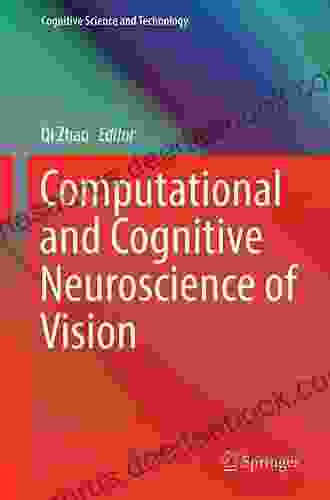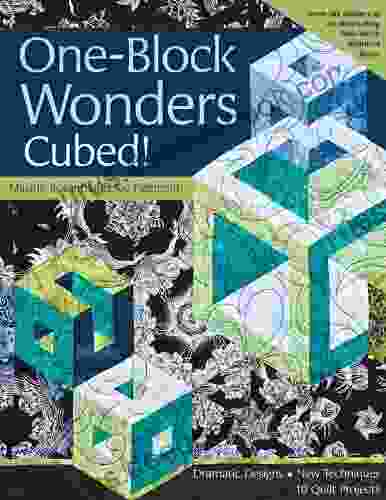Computational and Cognitive Neuroscience of Vision: A Comprehensive Guide

4 out of 5
| Language | : | English |
| File size | : | 9762 KB |
| Text-to-Speech | : | Enabled |
| Enhanced typesetting | : | Enabled |
| Word Wise | : | Enabled |
| Print length | : | 491 pages |
| Screen Reader | : | Supported |
| Paperback | : | 276 pages |
| Item Weight | : | 14.8 ounces |
| Dimensions | : | 6.1 x 0.63 x 9.25 inches |
Vision is one of our most important senses, allowing us to interact with the world around us and make sense of our surroundings. Computational and cognitive neuroscience are two fields that study how we perceive and understand visual information. Computational neuroscience uses computer models to simulate the brain's visual system, while cognitive neuroscience uses brain imaging techniques to study how the brain processes visual information.
In this article, we will explore the computational and cognitive neuroscience of vision. We will discuss the different stages of visual processing, from the retina to the visual cortex. We will also discuss how the brain integrates visual information with other sensory information to create a coherent percept of the world. Finally, we will discuss some of the applications of computational and cognitive neuroscience of vision, such as the development of new treatments for vision disorders.
The Stages of Visual Processing
The visual system is a complex network of neurons that process visual information from the retina to the visual cortex. The retina is the light-sensitive tissue at the back of the eye that converts light into electrical signals. These signals are then sent to the optic nerve, which carries them to the visual cortex in the brain.
The visual cortex is a large area of the brain that is responsible for processing visual information. It is divided into several different areas, each of which is responsible for a different aspect of visual processing. For example, the primary visual cortex is responsible for processing the basic features of objects, such as their shape, color, and orientation. The secondary visual cortex is responsible for processing more complex visual information, such as the meaning of objects and their relationship to each other.
The visual system is a highly efficient and powerful system that allows us to perceive and understand the world around us. However, it is also a complex system that is susceptible to a variety of disorders. These disorders can range from minor annoyances, such as nearsightedness or farsightedness, to more serious conditions, such as macular degeneration or glaucoma.
Computational Neuroscience of Vision
Computational neuroscience is a field that uses computer models to simulate the brain's neural networks. These models can be used to study how the brain processes visual information, and to develop new treatments for vision disorders.
One of the most important applications of computational neuroscience of vision is the development of artificial vision systems. Artificial vision systems are devices that can restore vision to people who have lost their sight. These systems use computer models to simulate the brain's visual system, and to generate images that can be seen by the user.
Another important application of computational neuroscience of vision is the development of new treatments for vision disorders. By understanding how the brain processes visual information, researchers can develop new drugs and therapies that can improve vision in people with vision disorders.
Cognitive Neuroscience of Vision
Cognitive neuroscience is a field that uses brain imaging techniques to study how the brain processes information. These techniques include functional magnetic resonance imaging (fMRI),electroencephalography (EEG),and magnetoencephalography (MEG).
One of the most important applications of cognitive neuroscience of vision is the study of visual illusions. Visual illusions are images that appear to be one thing, but are actually something else. These illusions can provide insights into how the brain processes visual information, and can help us to understand the causes of vision disorders.
Another important application of cognitive neuroscience of vision is the study of visual attention. Visual attention is the process of selecting certain parts of a scene to focus on. This process is essential for everyday activities, such as reading, driving, and playing sports.
By understanding how the brain processes visual information, cognitive neuroscience can help us to improve our vision and to treat vision disorders.
Applications of Computational and Cognitive Neuroscience of Vision
The computational and cognitive neuroscience of vision have a wide range of applications, including:
- The development of artificial vision systems for people who have lost their sight
- The development of new treatments for vision disorders
- The study of visual illusions
- The study of visual attention
- The development of new educational tools
- The development of new cognitive rehabilitation techniques
Computational and cognitive neuroscience are two powerful tools that can be used to study how we perceive and understand visual information. These fields have a wide range of applications, including the development of new treatments for vision disorders and the development of new educational tools. As these fields continue to develop, we can expect to learn more about the brain's visual system and how we can use this knowledge to improve our vision and our lives.
References
- Hubel, D. H., & Wiesel, T. N. (1962). Receptive fields, binocular interaction and functional architecture in the cat's visual cortex. The Journal of Physiology, 160(1),106-154.
- Kandel, E. R., Schwartz, J. H., Jessell, T. M., Siegelbaum, S. A., & Hudspeth, A. J. (2012). Principles of neural science (5th ed.). New York: McGraw-Hill.
- Marr, D. (1982). Vision: A computational investigation into the human representation and processing of visual information. San Francisco: W. H. Freeman.
- O'Connor, A. R. (2012). to cognitive neuroscience (2nd ed.). London: SAGE.
- Zeki, S. (1993). A vision of the brain. Oxford: Blackwell.
4 out of 5
| Language | : | English |
| File size | : | 9762 KB |
| Text-to-Speech | : | Enabled |
| Enhanced typesetting | : | Enabled |
| Word Wise | : | Enabled |
| Print length | : | 491 pages |
| Screen Reader | : | Supported |
| Paperback | : | 276 pages |
| Item Weight | : | 14.8 ounces |
| Dimensions | : | 6.1 x 0.63 x 9.25 inches |
Do you want to contribute by writing guest posts on this blog?
Please contact us and send us a resume of previous articles that you have written.
 Book
Book Page
Page Text
Text Reader
Reader Newspaper
Newspaper Paragraph
Paragraph Sentence
Sentence Bookmark
Bookmark Shelf
Shelf Glossary
Glossary Bibliography
Bibliography Foreword
Foreword Preface
Preface Synopsis
Synopsis Annotation
Annotation Footnote
Footnote Manuscript
Manuscript Bestseller
Bestseller Autobiography
Autobiography Reference
Reference Encyclopedia
Encyclopedia Resolution
Resolution Catalog
Catalog Card Catalog
Card Catalog Periodicals
Periodicals Research
Research Scholarly
Scholarly Lending
Lending Reserve
Reserve Academic
Academic Journals
Journals Reading Room
Reading Room Rare Books
Rare Books Interlibrary
Interlibrary Study Group
Study Group Dissertation
Dissertation Storytelling
Storytelling Reading List
Reading List Book Club
Book Club Textbooks
Textbooks Jeff Heaton
Jeff Heaton Bob Pitt
Bob Pitt Sean Gailmard
Sean Gailmard Kio Stark
Kio Stark Craig Revel Horwood
Craig Revel Horwood Deepak Gupta
Deepak Gupta Joe Newman
Joe Newman Whitney L Grady
Whitney L Grady Paul Amar
Paul Amar Nelson Mandela
Nelson Mandela John O Kane
John O Kane James Simpson
James Simpson Cristian Vaccari
Cristian Vaccari Mark Price
Mark Price National Geographic Kids
National Geographic Kids Mark Sullivan
Mark Sullivan Robert J Richey
Robert J Richey Joseph Plumb Martin
Joseph Plumb Martin Tom Cheetham
Tom Cheetham Myra Immell
Myra Immell
Light bulbAdvertise smarter! Our strategic ad space ensures maximum exposure. Reserve your spot today!
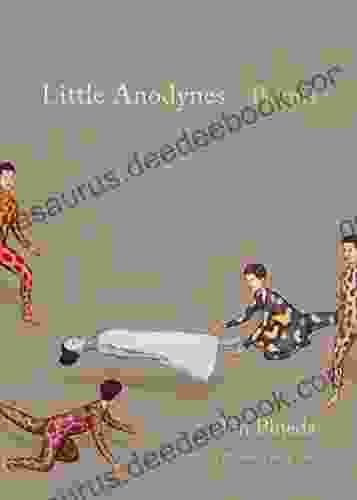
 Floyd RichardsonLittle Anodynes: Poems Palmetto Poetry Series | Exploring the Soothing...
Floyd RichardsonLittle Anodynes: Poems Palmetto Poetry Series | Exploring the Soothing...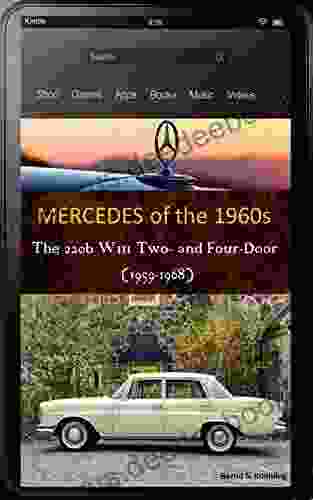
 George MartinMercedes-Benz W111 220b: The Epitome of Elegance and Performance in the 1960s
George MartinMercedes-Benz W111 220b: The Epitome of Elegance and Performance in the 1960s Evan HayesFollow ·7.1k
Evan HayesFollow ·7.1k Francisco CoxFollow ·8.7k
Francisco CoxFollow ·8.7k Troy SimmonsFollow ·12.3k
Troy SimmonsFollow ·12.3k Joel MitchellFollow ·6.3k
Joel MitchellFollow ·6.3k Tyler NelsonFollow ·12.4k
Tyler NelsonFollow ·12.4k Raymond ChandlerFollow ·16.1k
Raymond ChandlerFollow ·16.1k Dominic SimmonsFollow ·5.9k
Dominic SimmonsFollow ·5.9k Kenzaburō ŌeFollow ·16.8k
Kenzaburō ŌeFollow ·16.8k

 Gary Reed
Gary ReedWeb to Web for Beginners: A Comprehensive Guide to...
In today's interconnected world, websites...

 Elliott Carter
Elliott CarterThe Moon Is Down: John Steinbeck's Poignant Portrait of...
In the annals of literature, John...

 Dalton Foster
Dalton FosterMark The Mechanic: The Incredible Story Of A Young...
In the vibrant realm of robotics, where...

 Fred Foster
Fred FosteriPhone 13 Pro Max User Guide: Everything You Need to Know
The iPhone 13 Pro Max...
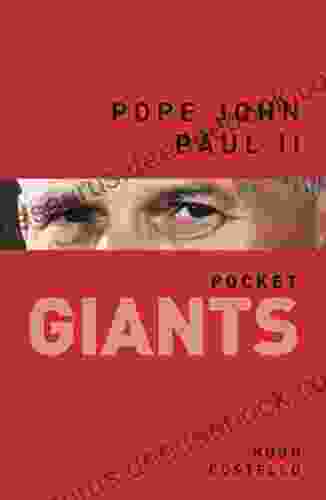
 Rodney Parker
Rodney ParkerPope John Paul II: The Pocket Giant Who Inspired Millions
Pope John Paul II, or...
4 out of 5
| Language | : | English |
| File size | : | 9762 KB |
| Text-to-Speech | : | Enabled |
| Enhanced typesetting | : | Enabled |
| Word Wise | : | Enabled |
| Print length | : | 491 pages |
| Screen Reader | : | Supported |
| Paperback | : | 276 pages |
| Item Weight | : | 14.8 ounces |
| Dimensions | : | 6.1 x 0.63 x 9.25 inches |


